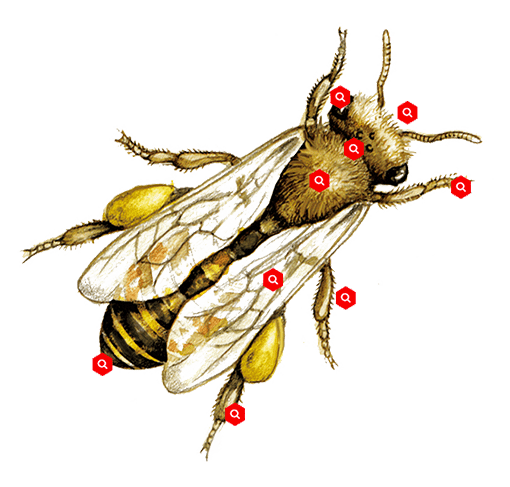What do bees look like? How do bees grow and what’s so special about honey bees?
There are many species of bees. Currently, 25 0000 species of bees are known, although there are probably more yet to be discovered. While all bees share most of their primarily common characteristics, notable differences exist between some species. For example, the smallest bee, also known as the lost bee (perdita minima), is only 2mm long, whereas the megachile pluto can grow up to 7 cm.
The majority of bees, including the sand and mason bees, live by themselves. This does not mean, however, that these solitary bees are unable or unwilling to live in the vicinity of their conspecifics. They even often build their nests next to each other for safety reasons. After all, a group of bees looks more threatening than a single bee.
Of all the bee species, there are only seven that produce honey for human consumption. Only two of those seven species, namely the honey bee (apis mellifera) and the Asian honey bee (apis cerana), are domesticated and can therefore be kept by beekeepers,.
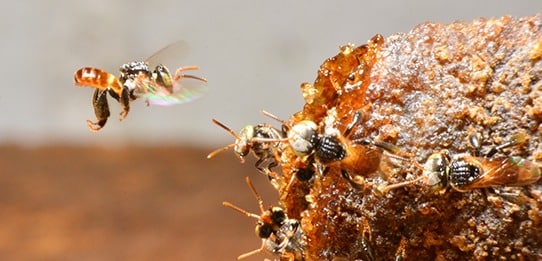
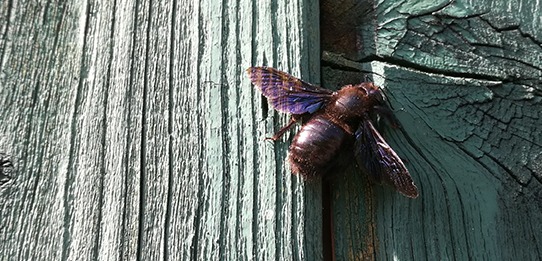
There are many species of bees. Currently, 25 0000 species of bees are known, although there are probably more yet to be discovered. While all bees share most of their primarily common characteristics, notable differences exist between some species. For example, the smallest bee, also known as the lost bee (perdita minima), is only 2mm long, whereas the megachile pluto can grow up to 7 cm.
The majority of bees, including the sand and mason bees, live by themselves. This does not mean, however, that these solitary bees are unable or unwilling to live in the vicinity of their conspecifics. They even often build their nests next to each other for safety reasons. After all, a group of bees looks more threatening than a single bee.
FUN FACT
Of all the bee species, there are only seven that produce honey for human consumption. Only two of those seven species, namely the honey bee (apis mellifera) and the Asian honey bee (apis cerana), are domesticated and can therefore be kept by beekeepers,.
Click on the body part you would like to observe and get more information.
a drone and a queen?

Queen
- The queen emerges after 16 days, from a fertilised egg that has received extra food and care.
- The queen weighs twice as much as the worker bee and is about the same size as the drones.
- Thanks to the pheromones the queen releases, the colony knows that the queen is well.
- The older the queen is, the more she has mated and the thicker her abdomen is.
- Queens have stingers without barbs, as opposed to the worker bees, who only use them to murder a competing queen.
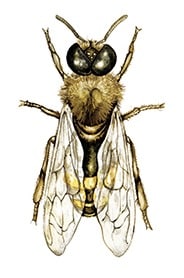
Worker bee
- The worker bee emerges from a fertilised egg after 21 days.
- The spoon-shaped mouthparts of the worker bee are a lot longer, because she is the only one responsible for gathering the nectar.
- The ovaries of the worker bee are set on non-active due to the presence of the queen.
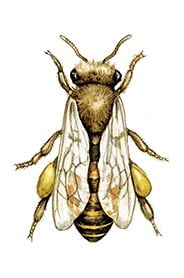
Drone
- The drone emerges from an unfertilised egg after 24 days.
- Thanks to its enormous compound eyes, the drone can see the queen from far away.
- Drones have bigger wings and a square-shaped body.
- In addition to its procreation function, the drone must also maintain the temperature in the hive.
- Most drones die in the winter as food becomes scarcer.
The procreation of bees is very different from that of humans. Honey bees live in eusocial colonies - as opposed to solitary bee species. The eusocial nature of honey bees ensures that only the queen can and will procreate. Although the other female bees – the worker bees – have the capacity to bear offspring, they never will.
It is also the queen that decides whether the egg becomes a drone, a worker bee or a new queen. The queen is completely uninvolved in raising her offspring. She leaves this to the worker bees.
Just like at the hospital, there is a maternity floor in a beehive: a separate space where new bees are raised, from egg to bee. A queen can lay as many as 2000 eggs a day at the peak of the season. By laying eggs continuously, she guarantees age diversity within her colony.

- The queen places her abdomen in an incubation cell and lays an egg.
- After about three days, the egg hatches.
- During the next 24 hours, the larva peels four times. It shakes off its external skeleton and grows further from then on.
- The nurse bees provide the larvae with enough food, so they can grow very fast.
- The cell is sealed. Next, the larva spins a cocoon and changes into a pupa.
- The pupa begins to look like a bee and starts to obtain substantial body parts, legs and eyes.
- The colours of the pupa change. First, the eyes become darker and purple, followed by the rest of the body: first the abdomen, then the legs, wings, and feelers.
- The adult bee emerges and fulfills its tasks.
